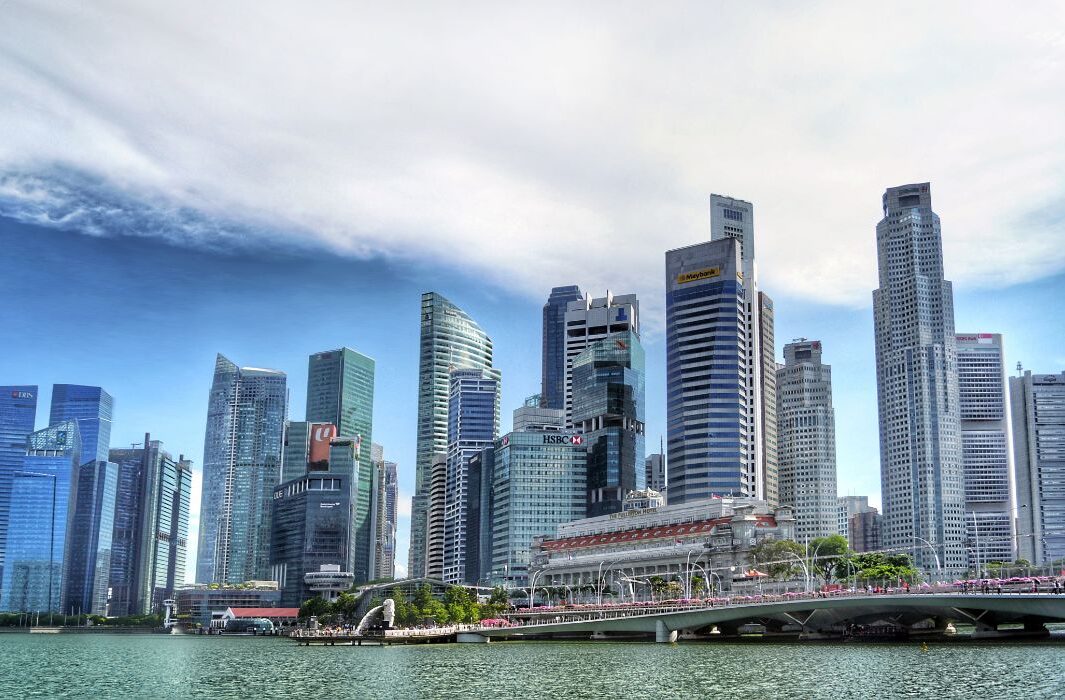Buildings contribute around 40 per cent of global energy consumption and 33 per cent of greenhouse-gas emissions.
On Sep 18, National Development Minister Desmond Lee reinforced the government’s effort to promote a more sustainable Singapore by introducing new incentives to encourage building owners to reduce energy consumed in cooling their buildings.
He announced the new gross plot ratio (GPR) incentives during the NUS Cities Symposium to encourage building owners to adopt new district cooling systems (DCS) or centralised cooling systems (CCS) that pipe chilled water to a network of connected buildings in a local district.
Old and new air-conditioning models for buildings
In conventional cooling models, each building has its standalone cooling system consisting of chiller plants, cooling towers, air-handling units (AHUs) and fan coil units, which are connected by a network of chilled water piping and pumps.
The in-building chiller plants (IBCPs) use water as the medium of heat exchangers, and refrigerant is used to cool the water, which is then circulated to AHUs on every floor. This process delivers cooling effects to end users.
Conventional systems consume a substantial amount of energy, which could be as high as 50 per cent of a building’s energy consumption, and are not efficient in regulating the cooling load fluctuation in buildings. For example, a building with two chiller plants will still have to run at half of the capacity, on one chiller plant, to service the low demand after office hours.
A DCS or CCS makes use of centralised chiller plants to serve pooled cooling demand of buildings on the same network. Such a pooled system is more efficient in redistributing excess capacity and reducing the wastage of resources.
A more sustainable way of cooling buildings
DCS and CCS are not just more sustainable; they could also transform how a city is cooled in three broad ways.
First, buildings’ carbon footprints could be significantly reduced by removing redundancy in resources and duplication in the installation of chiller plants and other accompanying equipment on site. Building owners could also reap significant savings in the costs of replacement and maintenance of the IBCP systems.
Second, DCS/CCS operators that pool capacity and resources together can reap economies of scale in the supply of chilled water to building users. The operators can invest in more efficient and greener chiller plants and accompanying equipment, to meet the cooling demand of participating buildings. The centralised chiller plants could regulate demand more efficiently by redistributing the chiller water among buildings between the peak and low periods, thus reducing energy wastage.
Third, building owners can save recurring operating costs by outsourcing the chilled water supply services to the DCS/CCS. They are freed from the need to maintain and service chiller plants and equipment in the buildings.
From the users’ perspective, the DCS/CCS run by third-party operators are more equitable, as tenants will be charged according to their usage of chilled water, just like payments for utilities. The “pay as you go” model could also nudge users to be more conscious with conserving energy.
Doing good things and doing things right
The new GPR incentive scheme will be attractive for owners of commercial properties in prime locations who have already “maxed” out their gross floor area. Building owners who onboard their buildings to the DCS/CCS network will be allowed to decommission their conventional cooling systems, and convert the utility space for more valuable commercial space in buildings.
Building owners who set aside space to host the DCS/CCS systems will also not be made worse off. The additional space that houses new chiller plants and equipment will be counted as the bonus GPR above the allowable Master Plan GPR.
The bonus GPR arising from hosting the DCS plants or conversion of the decommissioned IBCP space will be subject to the payment of the land betterment charge (LBC). Building owners and developers could recoup the LBC costs, together with other upfront costs incurred in decommissioning IBCP from the long-term savings in energy costs to cool their buildings.
The host building owners and developers may not have the expertise and experience to run the DCS/CSC systems. They could invite third-party operators, such as Keppel and SP Group, to undertake the business of “selling” chilled water.
Third-party operators will make upfront investments in new chiller plants and piping networks to supply chilled water, which will be charged at market rates when distributed to tenants in the host and receiving buildings.
“Doing good things and doing things right”, building owners could attain economic and environmental outcomes by choosing to collectively participate in the DCS/CCS initiatives. They could also contribute to making the transition to a lower-carbon future by cutting down carbon emissions while keeping their energy costs below the budget.
The article first appeared in The Business Times.





